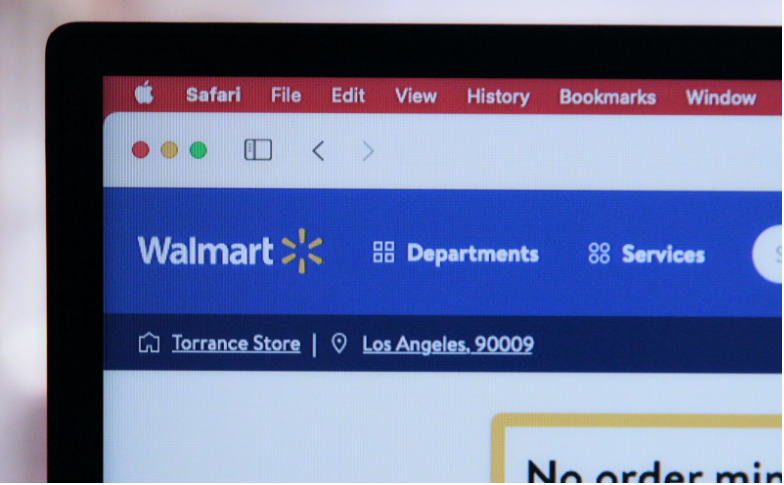Start your business with CJdropshipping
All-in-one dropshipping solution provider: product supplies, global logistics, free sourcing, POD, video shooting, and other dropshipping-related services.
CJ Blog
Dropshipping is a business model in which the dropshipping store operator doesn't hold in inventory the goods they are offering. Instead, the products are purchased from dropshipping suppliers when customers order them and, then, used to fulfill the order.
It's easier to think of dropshippers as intermediaries who are experts at driving traffic to their dropshipping stores, which is increasingly straightforward (and competitive) given the wide selection of online marketplaces offering dropshipping programs.
One of the keys to dropshipping success in 2022 is the ability to direct online traffic to your product pages at a minimal cost.
Some dropshippers constantly revise their ad targeting strategies and look for budding trends to capitalize on before they go for it, while others have turned to content marketing and create engaging short videos on social media platforms that can blow up their sales by enticing impulsive purchases.
Diversification is important, however, and for those looking to tap into the massive user base of traditional retailers, listing products in online marketplaces can pay off big time when combined with other strategies to drive traffic.
That’s why experienced dropshippers will often sell in online marketplaces, in addition to their own dropshipping stores.
This article will look at three of the biggest dropshipping marketplaces and see how their services compare to selling through your own dropshipping store.
eBay is not what it once was, but with 109 million monthly visitors in 2021 (roughly half of Amazon's 198 million monthly visitors), it's still enough of an eCommerce heavyweight to draw 19 million sellers with over 1.5 billion active listings—interested yet?
Photo by Oberon Copeland @veryinformed.com on Unsplash
While most people believe that you can't dropship on eBay, as it's still seen as a platform for online auctions, eBay has made its dropshipping policy quite clear.
eBay allows dropshipping on its platform as long as you're fulfilling your orders from a wholesale supplier.
Dropshipping is not allowed on eBay, however, if you're simply "listing an item on eBay and then purchasing the item from another retailer or marketplace that ships directly to your customer".
This rules out some recent dropshipping trends. For instance, listing DIY home improvement items and then dropshipping from Home Depot is no good because the items arrive in boxes covered with their orange logos since Home Depot doesn't offer a dropshipping program or even custom labels.
Needless to say, eBay doesn't take kindly to this type of dropshipping.
Amazon is the largest eCommerce marketplace in the world. Dropshipping on Amazon means having access to the largest audience of online consumers. But is it really that simple?
 Photo by Marques Thomas on Unsplash
Photo by Marques Thomas on Unsplash
The process is straightforward. Sign up for a seller's account and create a product listing. You can do so by visiting Amazon Seller Central, where you'll have to choose between "Individual" and "Professional" sellers, depending on whether you think you can sell 40 items every month.
The Individual plan costs $0.99 per unit sold, and the Professional plan costs $39.99 per month no matter how many units you sell.
Amazon also charges a referral fee for each unit sold, usually between 8-15%. As long as you know what you want to sell and have located a supplier, there's not much else to it.
|
Click to see the detailed explanation for Amazon dropshipping here!
|
Walmart offers dropshippers the opportunity to sell their products through the Walmart Marketplace.
As a traditional retailer, Walmart needs no introduction, but did you know that its 2022 eCommerce sales volume already amounts to USD 47.8 billion, even before the holiday season?
This represents an increase of 11% from 2021. Walmart's rapid growth in the eCommerce space is due to its headfirst pivot into eCommerce, which includes its flexible dropshipping program that offers at least three options for dropshippers.
 Photo by Marques Thomas on Unsplash
Photo by Marques Thomas on Unsplash
First-party selling on Walmart is the simplest option. All you need to do is sign up for an account on its seller center as a Warehouse Supplier.
It's worth pointing out that Walmart also offers a Drop Ship Vendor Program, which isn't ideal for first-time dropshippers, as it's designed for volume sellers, and comes with additional requirements.
As a Warehouse Supplier, you have much less to worry about, however, since you simply need to ship your products to the Walmart fulfillment center when orders come in, and they'll take care of the rest.
Of course, you could arrange for your dropshipping supplier to ship to the fulfillment center, so you'd have even less to worry about.
This option offers much more control over how your products and brand are represented, as you'd be responsible for listing optimization, customer service, pricing, and more.
You can still use Walmart fulfillment center to fulfill your order, however, by shipping your items to their fulfillment center.
This service will cost you but can give your product listings the vote of confidence that comes with a "Fulfilled by Walmart" badge.
Third-party dropshippers that sell their products on the Walmart Marketplace and fulfill their own orders have ultimate control over their brand.
This option works best for dropshippers with the team and resources to make everything work by themselves.
You're probably wondering, "What does Walmart do for me then?". The truth is, aside from the online traffic that its marketplace attracts, not much. But this may be enough for seasoned dropshippers looking to scale their business.
Building your own dropshipping store allows you to present your products and brand in a way that's totally within your control.
From your home page to product details and customized checkout pages, you can tailor every step of the customer journey to ensure the highest retention and conversion rates.
Create an online shopping experience for your customers that they'll remember, and they'll come back around again, especially if you remarket to your visitors using well-timed email marketing campaigns.
You can also stock up your dropshipping store with an unlimited product selection by bulk importing product listings from dropshipping suppliers on platforms like CJdropshipping or AliExpres, as well as other dropshipping stores.
This function is available through dropshipping store builders like Shoplazza directly integrated with dropshipping product sourcing platforms.
It's virtually impossible to brand your dropshipping store as effectively on online marketplaces like Walmart, eBay, and Amazon, most notably because you won't have access to your customers' contact info for remarketing campaigns.
Additionally, your products and brand will also have a tough time standing out from similar products listed in a manner designed to downplay, rather than highlight, branding efforts. It all comes down to competitive pricing and customer reviews with online marketplaces.
But this doesn't mean you shouldn't take advantage of the traffic gold these online marketplaces offer.
Dropshipping on Walmart, eBay, and Amazon is entirely compatible with having a dropshipping store that doubles as the starting point of your private traffic pool.
Linking to a branded dropshipping store can increase the trustworthiness of your product listings in online marketplaces and help capture potential customers by asking your dropshipping store visitors to submit their emails for exclusive offers and content.
Generally, there are 5 main steps to launch a dropshipping store: first, you need to find products you want to sell on sourcing platforms like CJdropshipping;
- then you can choose an online store website builder like Shoplazza, as they offer a large selection of dropshipping store templates that you can customize or publish as they are with one click and start dropshipping from your own store;
- Import product listings complete with images and descriptions to your online store with a few clicks (using dropshipping tools like Skuowner, which is fully integrated with CJdropshipping).
- Confirm the default shipping profile or set up custom shipping options;
- Link your credit/debit card to pay for orders;
- Set up payment options for your customers to receive payments for orders.
Walmart, eBay, and Amazon online marketplaces are great traffic sources for dropshippers, which you can use in conjunction with your own dropshipping store to more effectively market your products and build your brand.
Whether you decide to adopt both strategies depends on your business goals.
Chat
Share